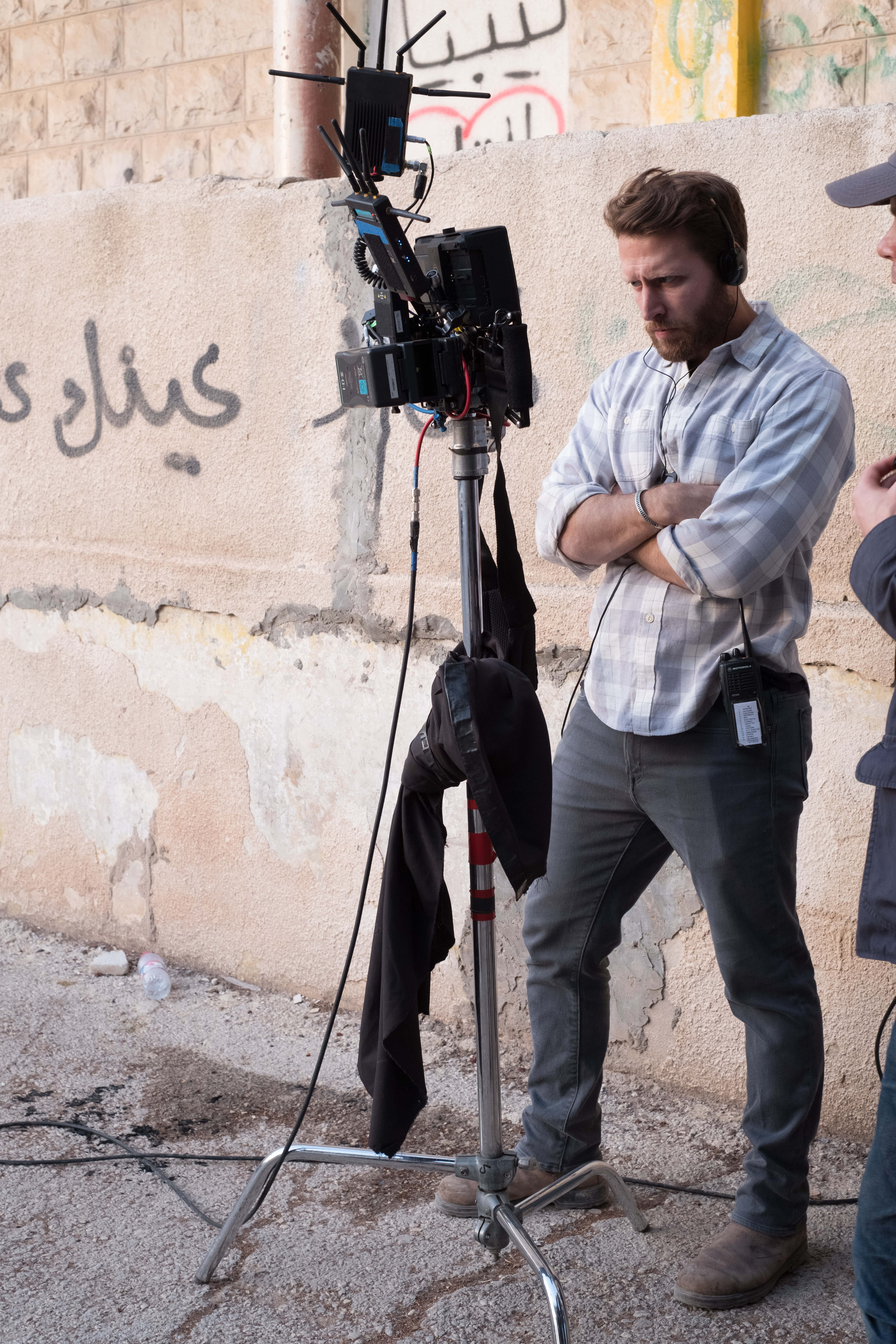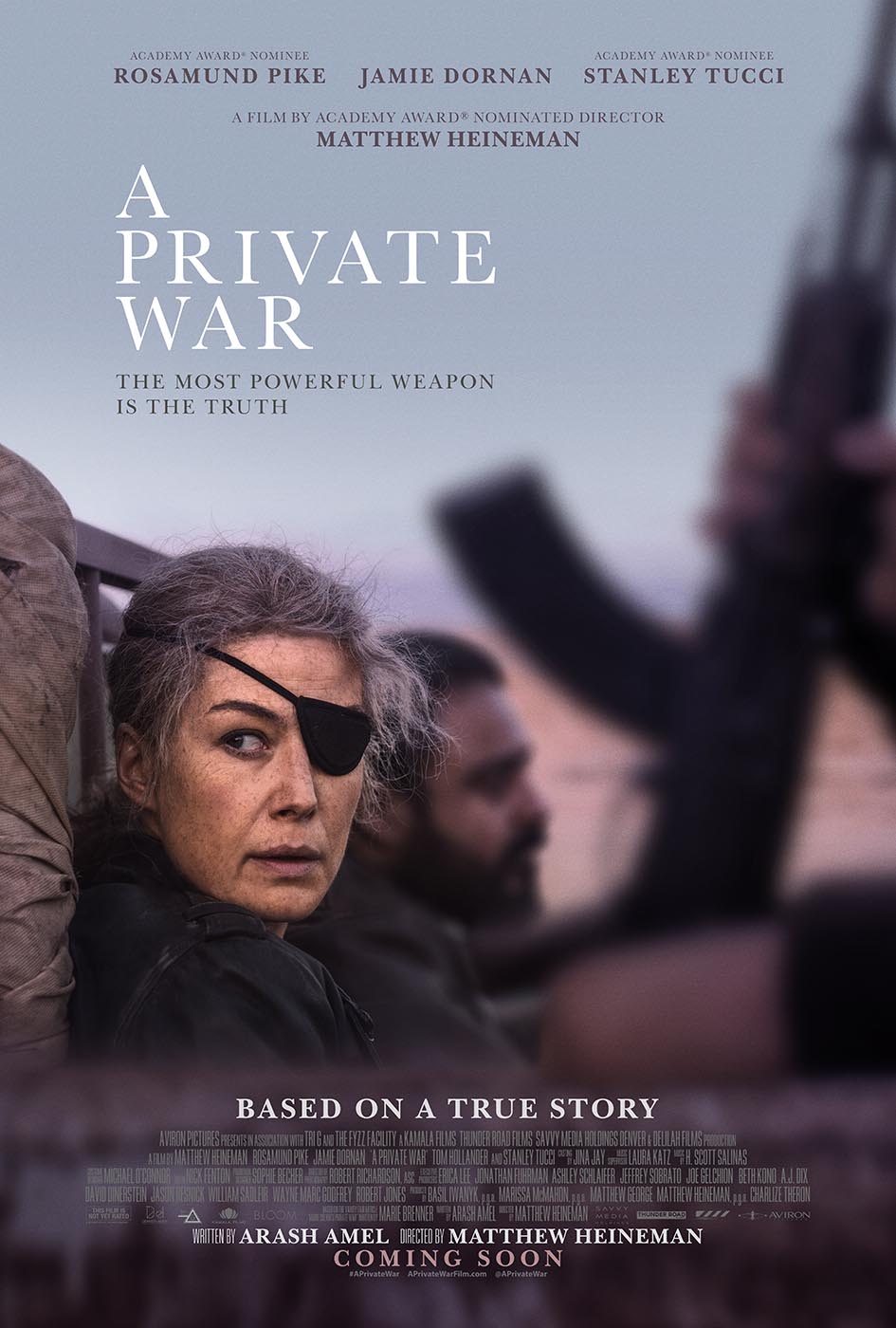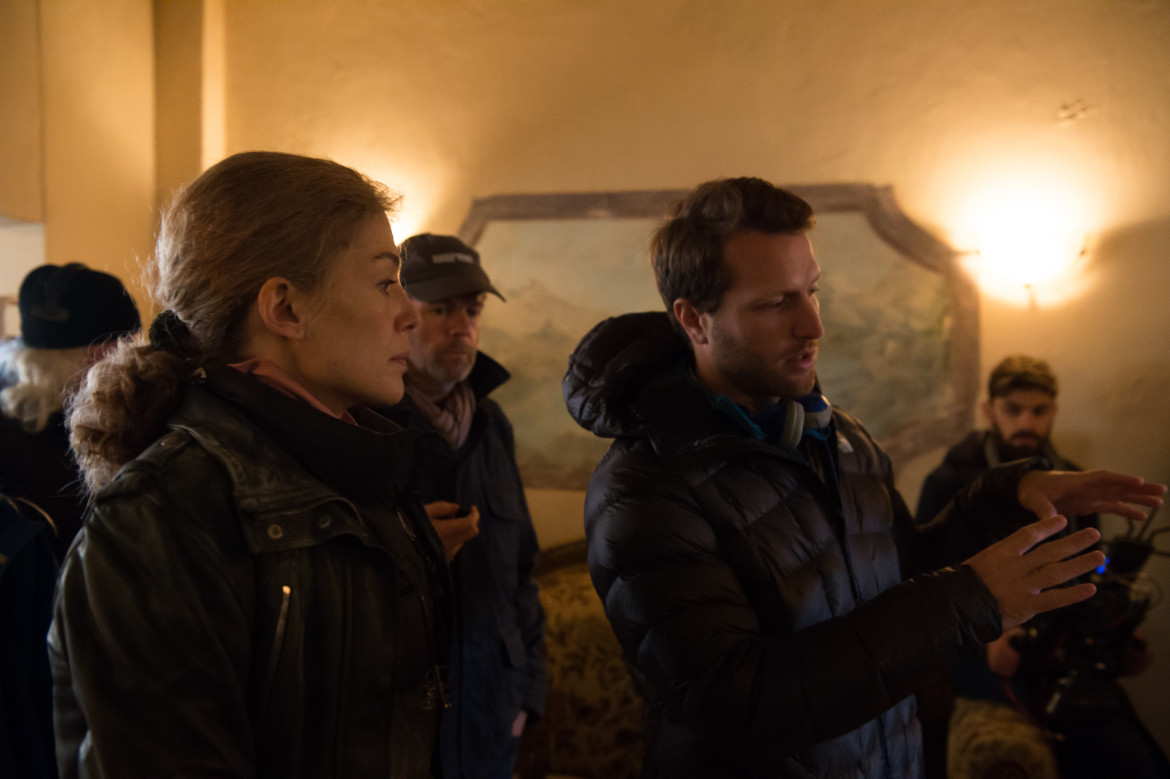Award-winning documentary filmmaker Matthew Heineman debuts narrative feature about war correspondent Marie Colvin
By Erasmo Guerra
Matthew Heineman is best known for his documentary film work that includes “Escape Fire: The Fight to Rescue American Healthcare,” “Cartel Land,” nominated for an Academy Award for Best Documentary Feature, and most recently, “City of Ghosts” about a group of citizen journalists in Raqqa, Syria, who come together to report online how ISIS seizes and then lays waste to their city.
Heineman’s latest film, “A Private War,” is his first narrative feature. The movie stars Rosamund Pike as Marie Colvin, the legendary American war correspondent who worked for the British press. Pike’s portrayal of Colvin as a vodka-swilling, chain-smoking journalist who admittedly hates war but feels compelled to see it for herself despite being forced to wear an eye-patch (she lost her left eye during an assignment/deployment to yet another conflict zone), will burn into your consciousness, like the searing afterimage of a figure outlined by the heat and light of a bomb explosion, long after you left the movie theater.
Academy Art U News spoke with Heineman while he was in town for the Mill Valley Film Festival, where “A Private War” was one of its two opening night films.

Director Matthew Heineman contemplates his next shot on the set of “A Private War.” Photo credit: Keith Bernstein / Aviron Pictures.
How was it to pivot from documentary films to a narrative feature film?
It was exciting. It’s a story that I care deeply about. A world I know a little bit about myself. When I first heard about the possibility of doing this it just seemed like a no-brainer for me. I’d known of Marie—I didn’t know her personally—but I empathized with her deeply; that draw to tell these stories. But also the cost that comes with it. I felt I had to tell this story. It’s a movie about journalism, shot in a documentary style. I tried to bring my background as much into this process as I could.
How was that process? Before, you were interviewing subjects, now you’re directing actors. Did the work feel different?
It did and it didn’t. I tried to create an environment on the set that was as real and authentic as possible. In the war zone scenes, most of the extras were from those countries. So we spent a lot of time interviewing and talking to people. Especially the featured extras. When we’re in Homs, the women and the widows were really from Homs. They were in those situations in real life. They were telling their own stories. And those tears were real tears. It was quite a heightened environment on set emotionally. It was quite difficult but also an inspiration for why we’re telling this story.
On another level, my documentary work is based on trust. Trust with your subjects. Trust where you’ll be able to capture real, human drama. And so I think that trust was quite important in terms of working with actors.
How do you create that environment for your crew and your actors? Is it rehearsals? Talking it out?
For all the important scenes in a movie, we spent weeks or months talking about it. How do we get to the place that we need to get to, but also leaving room for improvisation? We weren’t always beholden to the script. I very much wanted to create [an] atmosphere where we let things evolve and change. Where they felt the freedom to express themselves. … I didn’t go to film school. I just started making documentaries without any sort of formal training and a lot of this was just figuring it out as I went.
How strict were you about accurately portraying the real-life person Marie Colvin? And how much did you allow for creative license to tell the story for the screen?
My North Star was always to be as emotionally accurate as possible to make sure we were personifying Marie, trying to get at who she really was and what she stood for. Obviously, we didn’t have written conversations between her and her editor, for example, but we tried to—in the script, in the performances, in the editing—be as accurate as possible. That was one of the most difficult things for me. Most of these relationships—Marie and her editor, Marie’s key relationships with real people, some of the other characters we had to create composite characters out of respect for those individuals. So there was some poetic license to contain the story. But I wanted to make sure we got her right.

Courtesy of Aviron Pictures.
You’ve said that you did the “Cartel Land” documentary after reading about the drug war in an article in The New York Times. How did you find Marie Colvin’s story?
I knew of her—just didn’t know her personally. After I made “Cartel Land,” and for whatever reason, I was approached by a bunch of people about making a narrative film. I was sent a number of scripts. I wasn’t making docs as a way to get into making narrative films. I love documentaries. I always want to be making documentaries. So a story really has to mean something to me. And when I got an early draft of the script on Marie, it just spoke to me in a way I knew I had to tell this story. The script was loosely based on a Vanity Fair article by Marie Brenner. I immediately read that article and started diving into Marie’s story, trying to understand her and her world. I flew to London to meet with her friends. Spent months and months researching as I would with researching a doc, trying to bring that authenticity to the script with the screenwriter Arash Amel.
There was a moment in the movie where Marie says ‘When covering war, can we really make a difference?’ Your past documentary work has always been about social issues and trying to bring them to light to create change. Does doubt ever creep into your work? About the message you’re trying to get across or even to get people to see what you’ve witnessed?
Absolutely. You want to make people care. To quote from Marie, ‘Make people care as much as you do.’ And I think that’s what drives my documentary work and what drove me in this film. Getting people to empathize. I love the challenge of taking something that people think they understand and then trying to dissect it and put a human face to it, whether it’s the healthcare system in “Escape Fire,” my first documentary film, “Cartel Land,” or even this film. It’s so easy to pick up the paper, read an article, and not understand (or not think about) how that story got to you.
I believe, similar to Marie, that by shedding light on one person, one character, one story, you can really illuminate a much larger story, humanizing these stories, that’s what gets people to care. At least hopefully. Like her, I often have this existential crisis as to whether you are making a difference, whether anyone does care. Are you making a difference?
“A Private War” is now playing in San Francisco.
This interview has been edited and condensed.
